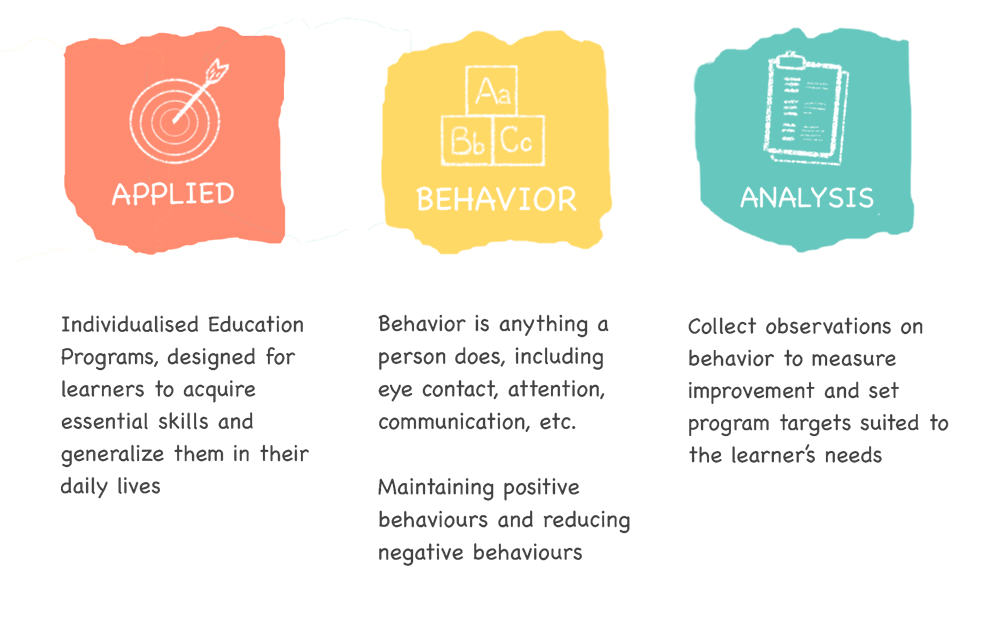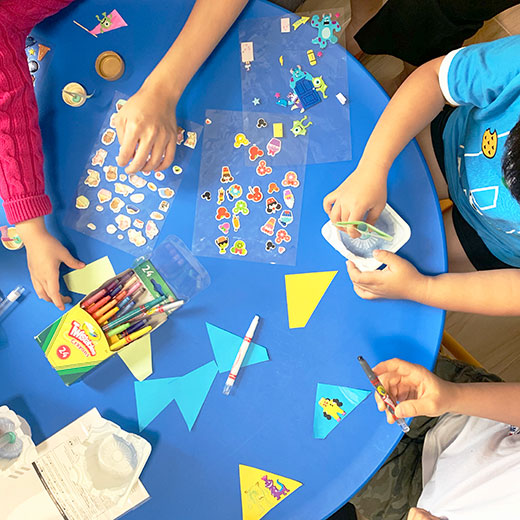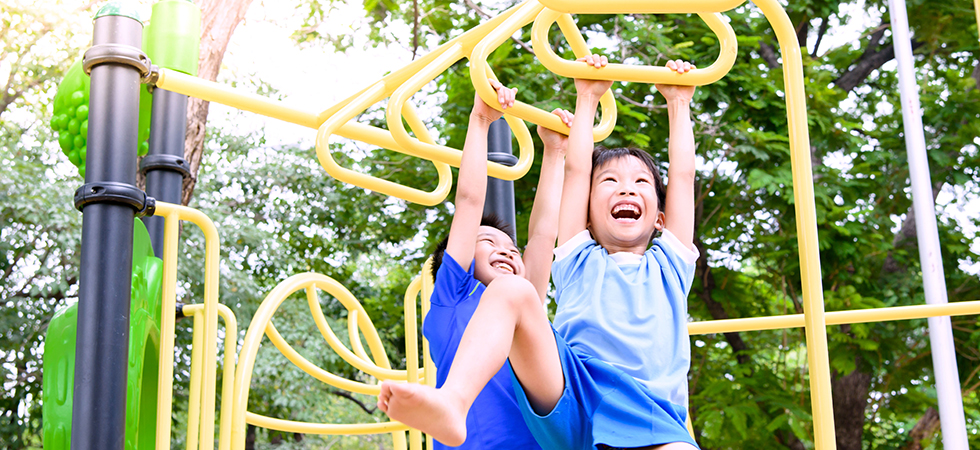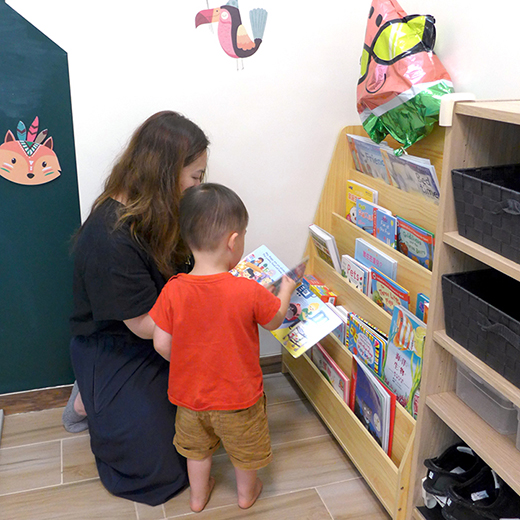Our Methods and Approach
Applied Behavior Analysis (ABA) with an emphasis on Verbal Behavior (VB) is the backbone of everything we do at ASCEND. To help learners become independent and motivated, we round out our approach with Natural Environment Teaching (NET), Social Thinking ® and other teaching tools.
Read more about our approach:
Applied Behavior Analysis (ABA)
ABA continually tests and evaluates its method.
Therefore, we evolve with it.
Applied Behavior Analysis (ABA) is a science that applies practical strategies from the principles of behavior to improve the learning abilities and development of individuals.
ABA therapy, or behavioral therapy, is a well-established treatment shown to improve language, attention and social skills, and reduce inappropriate behaviors (NAC, 2009).
Since the 1960s, practitioners have used ABA to help learners with special needs and understand their behavior. It is a dynamic approach when adeptly implemented, and can support learners of all ages. Research shows that early intervention lays a significant foundation for future development. Increasing number of research also demonstrates ABA's effectiveness for teenagers and young adults.
As an evidence-based approach, ABA is endorsed by agencies in Canada and the United States, including the National Institutes of Health and the American Psychological Association.
ABA and behavioral therapy are also listed as one mainstay of treatment for children with Autism Spectrum Disorder and Attention Deficit / Hyperactivity Disorder by the Child Assessment Service, Department of Health Hong Kong.
ABA at a glance

Naturalistic Teaching
Throughout the learning journey, we stress the importance of Natural Environment Teaching (NET). It helps learners generalize and use their skills in everyday situations.
During free play, we work with your child’s interests to encourage social interaction and language development. For instance, a learner wants to reach for some train tracks by going closer to them. Therapist may say, “These are train tracks” and invite the learner to say more about the toy, for example the color and what it is used for. The therapist and learner can then build the tracks together.
By mimicking natural routines and conversations, your child can develop their abilities to learn in other environments.

Verbal Behavior
Here at ASCEND, our approach to ABA places an emphasis on Verbal Behavior.
What is Verbal Behavior?
Verbal Behavior (VB) therapy teaches communication and language. It is an approach that encourages learners to learn language by connecting words with their purposes.
How does Verbal Behavior work?
By motivating
Learners learn that words can help them get desired objects or results. One major part of the initial program consists of teaching the child to request items, activities and information. By doing so, we teach the child that using language is valuable to them.
By learning the function of language
Verbal Behavior does not focus on words as labels only (cat, car, etc.). Rather, it teaches why we use words and how they are useful in making requests and communicating ideas.
When someone utters a word, the word may have different functions. For example, when someone says “apple”, it doesn’t necessarily mean that he wants apple (see below table for the different functions of expressive words).
Language is classified into types, called “operants”. Each operant has a different function.

What to expect from ABA
To communicate their needs and thoughts effectively
Learning readiness
– To remain calm
– To be flexible amidst changes
– Sustaining attention
– Fluent responding and cooperation
– Ability to receive instructions in different environments e.g. school
Life Skills
– Breaking down skills into a step-by-step process
– Developing self-help skills, like packing school bags, into essential life skills as the learner grows older
– E.g. Taking public transport, calling or messaging others
– To behave appropriately in social situations
– To be able to understand others’ thoughts, feelings and/or internal states (e.g. perspective taking)
– to be able to handle unexpected situations in daily life, regulate emotions and resolve the problem

Intensive training
Time is very valuable to a learner. Therefore more sessions, or an intensive training program is often recommended for early learners. However, intensive training does not always equate repeating drills in a robotic way.
At ASCEND, intensive training means more teaching and learning opportunities. With a longer session time, we motivate learners by balancing structured table-top learning with learning through activities and play.
In addition, more frequent sessions allows for our comprehensive programs to achieve more outcomes. Together we work on learning difficulties, language, communication, self-management, emotion regulation, self-help and social skills.
Self-Management
Breaking bad habits is a part of growing up. Self-Management is a systematic method that teaches learners to adjust their own behaviors independently. Children and teenagers can learn to be their own monitors, from simple tasks like brushing teeth to more complex social behaviors like group participation, responding to teasing and dealing with different emotions.
Social Stories (™)
We learn through watching and reading. Social Stories (™) is a social learning tool which uses personalized text and pictures. It is written from a learners’ point of view of a situation and shows possible solutions in different situations. For example, through reading a social story about taking public transportation, learners can understand the appropriate behaviors expected in that situation.
A study conducted by Chan and O’Reilly (2008) showed that Social Stories (™) helped to increase social initiations, as well as decreasing inappropriate interactions and vocalizations of two students with autism in an inclusive classroom.

Every child has a unique learning profile, and there are many educational tools. If you have any questions, our BCBA Clinical Supervisors can offer advice on effective teaching strategies to support your child.

Social Thinking ®
Social interactions can be complicated and challenging. Developed by Michelle Garcia Winner, Social Thinking ® strategies can help learners understand the perspectives and motives of others.
For example, a student threw toys at the wall after losing a game. Using visual cues, video review and modelling, we help him understand what may happen afterwards – his friends may not want to play games with him next time. We teach social interactions and communication required to adapt to different situations.
With this understanding, learners will gradually gain the confidence and problem-solving skills helpful for sustaining meaningful relationships.